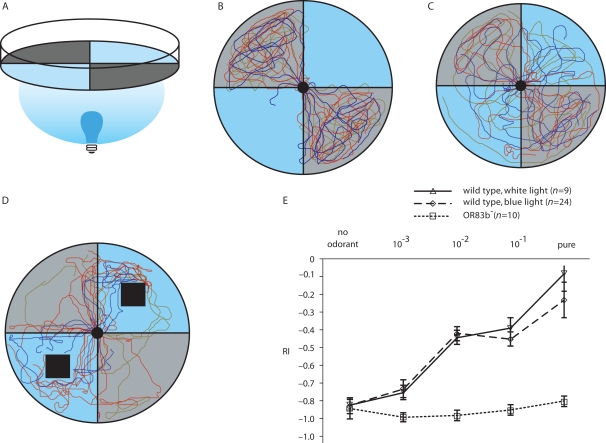Figure 2.
Odor-induced or optogenetically induced behavior of wild type and transgenic larvae. (A) Experimental setup. A Petri dish is divided into four quadrants. Blue quadrants represent illuminated areas while gray sections are light-impermeable. (B) Negative phototaxis behavior of wild type larvae shown as individual crawling traces of 35 larvae. (C) The same experimental test as in (B), but this time transgenic larvae are used that express ChR2 under the control of OR83b-Gal4 in all ORNs. Larvae show less pronounced negative phototaxis behavior. (D) Wild larvae exposed to blue light and simultaneously to the attractive odorant benzaldehyde in illuminated areas, indicated by the black squares, show some attraction toward the odor source. (E) In a similar experimental setup a response index (RI) is calculated indicating the degree of attraction toward or repulsion from an odor source. A RI of −1 indicates complete repulsion. In this experimental setup the repulsive odorant octyl acetate is applied in the dark quadrants at various concentrations. With increasing odor concentration wild type larvae escape from the dark into illuminated areas (blue or white light) as is indicated by the increasing RI. In contrast, anosmic mutants (Or83b−) show a normal negative phototaxis behavior and strongly avoid blue or white light (modified from Bellmann et al., 2010).

